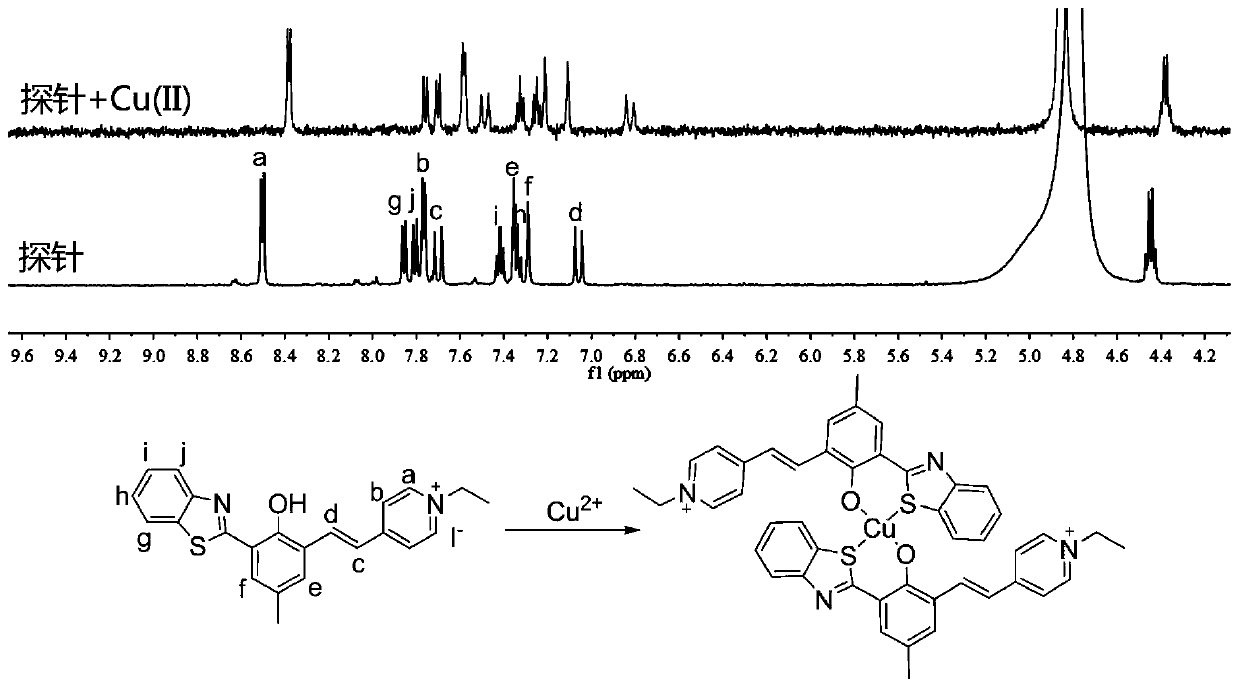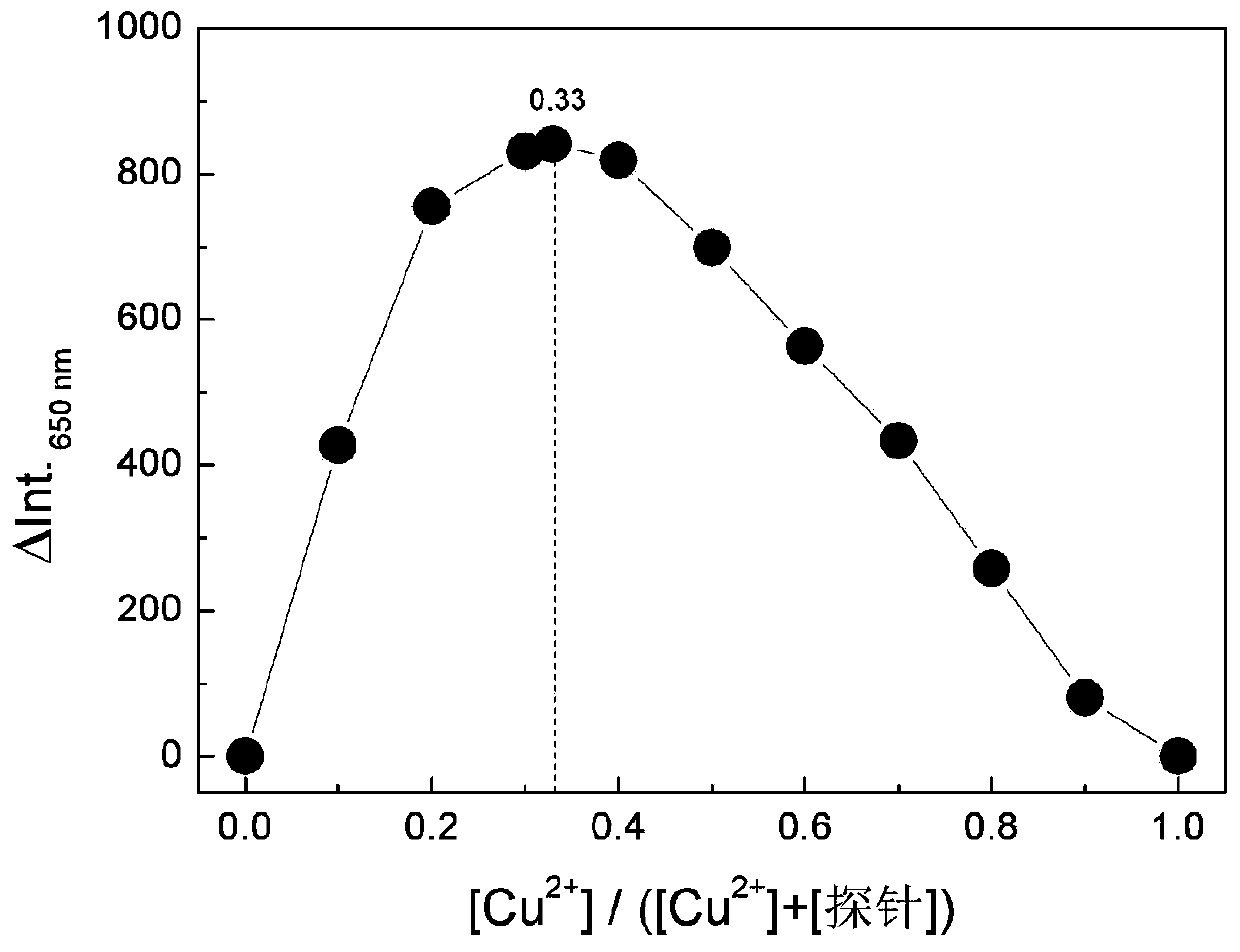Fluorescent probe for determining acetylcholin esterase as well as preparation method and application of fluorescent probe
A technology of acetylcholinesterase and fluorescent probe, which is applied in the field of enzyme activity detection, can solve the problems of complicated instruments, limited practical application, etc., and achieves the effect that the preparation method is simple and feasible, and the organic synthesis step is omitted.
- Summary
- Abstract
- Description
- Claims
- Application Information
AI Technical Summary
Problems solved by technology
Method used
Image
Examples
preparation example Construction
[0043] A method for preparing a fluorescent probe for measuring acetylcholinesterase, the specific steps of the method are as follows:
[0044] Add probe master solution and CuCl in PBS buffer solution at room temperature 2 Solution, stirring and coordination reaction to obtain the target product HBTP-Cu 2+ Complex fluorescent probes.
[0045] Preferably, the pH value of the PBS buffer solution is controlled between 7.5 and 8.5.
[0046] Preferably, the probe mother liquor and the CuCl 2 The molar ratio of the solution is 2:1, and the concentration of the probe mother solution is 2.0~3.0mmol / L, the CuCl 2 The concentration of the solution is 0.05-0.20 mol / L.
[0047] A HBTP-Cu 2+ Application of complex fluorescent probe to selectively recognize acetylcholinesterase in solvent system.
[0048] In order to further realize the technical effect of the present invention, in the solvent system, the volume percentage of water is 95-100%.
[0049] A HBTP-Cu 2+ The application of...
Embodiment 1
[0052] HBTP-Cu 2+ The preparation method of the complex: Add the probe mother solution (8 μL, 2.0 mmol·L -1 ) and CuCl 2 Solution (0.1μL, 0.05mol L -1 , 0.5equ.), that is, mixed according to the molar ratio of 2:1, coordination occurs, and HBTP-Cu is obtained 2+ Aqueous solution of the complex.
Embodiment 2
[0054] HBTP-Cu 2+ The preparation method of the complex: add the probe mother solution (8 μL, 2.5 mmol L to 2 mL PBS buffer solution (pH=7.8) -1 ) and CuCl 2 Solution (0.1μL, 0.1mol L -1 , 0.5equ.), that is, mixed according to the molar ratio of 2:1, coordination occurs, and HBTP-Cu is obtained 2+ Aqueous solution of the complex.
PUM
 Login to View More
Login to View More Abstract
Description
Claims
Application Information
 Login to View More
Login to View More - R&D
- Intellectual Property
- Life Sciences
- Materials
- Tech Scout
- Unparalleled Data Quality
- Higher Quality Content
- 60% Fewer Hallucinations
Browse by: Latest US Patents, China's latest patents, Technical Efficacy Thesaurus, Application Domain, Technology Topic, Popular Technical Reports.
© 2025 PatSnap. All rights reserved.Legal|Privacy policy|Modern Slavery Act Transparency Statement|Sitemap|About US| Contact US: help@patsnap.com



